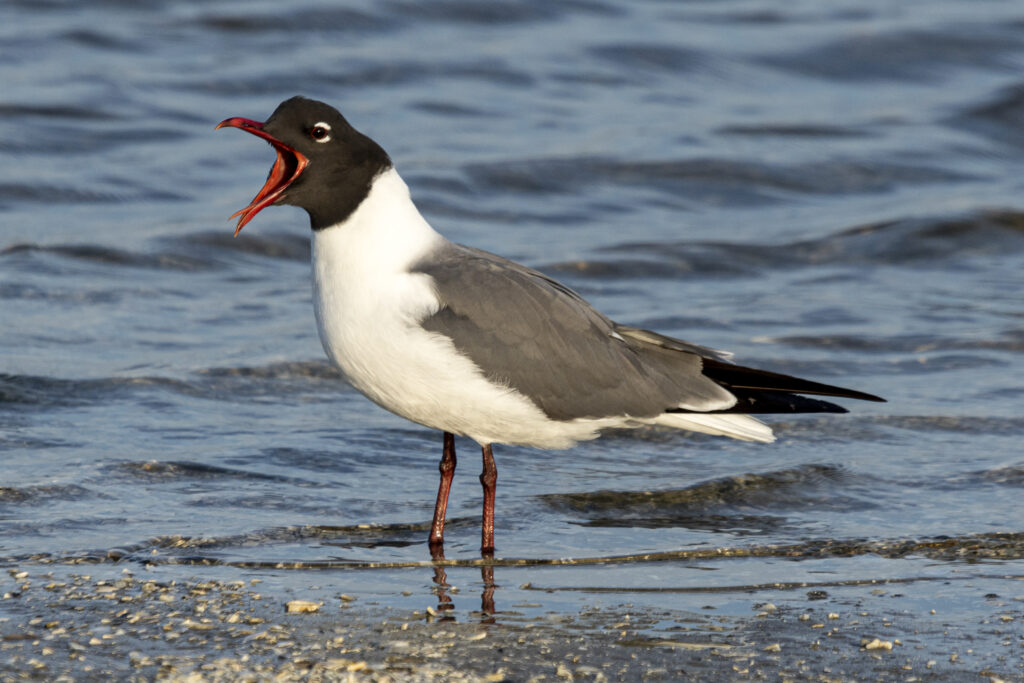The Laughing Gull, Leucophaeus atricilla.
Gulls are not to be dismissed as just annoying picnic intruders. Some say they are actually “noble.” “Gull” from old Norse, means unhatched or new bird. Leucophaeus, from ancient Greek, means “dusky white.” From the Latin, atricilla means “black tail.”

The adult Laughing Gull is easily identified by its contrasting plumage. During the breeding season, adults have a black head, a white eye-ring, a dark gray back and a white body. The outer half of the wings are black in flight but only wingtips are visible when folded. Their legs and bill vary in color from dark orange to black and the bill is a bright red with a black ring near the tip. Immature gulls are variable in coloration but generally brown and tan mottled reaching adult plumage in three years. True to their name, Laughing Gulls are known for their distinctive laugh-like vocalizations, which sound like humans’ “ha-ha-ha-ha.”
Laughing gulls are opportunistic feeders and are known for their scavenging behavior. They are often seen foraging on beaches, tidal flats, and in shallow coastal waters. They are social birds and frequently form flocks during the non-breeding season. This gull breeds in large colonies mostly along the Atlantic coast of North America, the Caribbean, and northern South America. Laughing gulls breed in coastal marshes and ponds in large colonies of up to 25,000 pairs. A large nest, made mostly from grass, is constructed mainly by the female.. The gulls tend to nest in higher places with more grass which helps to protect against flooding.
Three or four greenish eggs are incubated for about three weeks. Laughing Gull chicks hatch a day or two apart (termed “asynchronous” hatching), resulting in different-sized nestlings. The oldest, strongest nestlings tend to get more food from their parents and in times of abundance all the chicks survive. But in years where food is scarce, the smallest and weakest nestlings may not make it. But this appears to be a better evolutionary strategy than having equal-sized chicks all competing for inadequate food. After six days of age, Laughing Gull chicks can recognize the calls of their parents and call back to them, an important survival mechanism when the nest may be in a colony of thousands of other nests. Newly hatched chicks can leave the nest a day after hatching but take another five weeks before fledging.
Around the turn of the 20th century, Laughing Gulls were sought out by market hunters who targeted this bird for its eggs and for its feathers which were used in the millinery trade. Like the Bald Eagle, Peregrine Falcon, Brown Pelican and others, Laughing Gull populations decreased with the increased use of pesticides in the 1950’s but their populations have recovered. Although common, the Laughing Gull is still vulnerable to the destruction of its coastal habitat by encroaching human development and increased flooding caused by climate change. Breeding colonies tend to be localized and concentrated and can be easily disturbed by off-road vehicles, people walking, dogs, feral cats, and rats. Competition from other gulls for nesting space and oil spills are additional threats.
Thank you. Despite my extensive reading, you always tell me something I didn’t know before.
Thanks a lot for driving our attention to the most common and least prestigeous birds.